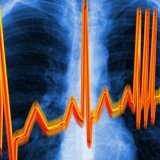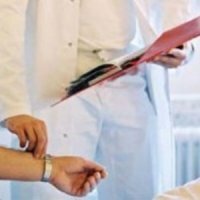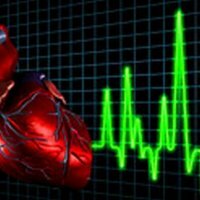Acute coronary syndrome: diagnosis and emergency care
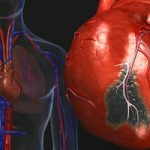 Acute coronary syndrome( for simplicity it is shortened - ACS) is a working diagnosis, which is used by emergency and ambulance doctors.In fact, it combines two diseases - unstable angina and a true myocardial infarction.
Acute coronary syndrome( for simplicity it is shortened - ACS) is a working diagnosis, which is used by emergency and ambulance doctors.In fact, it combines two diseases - unstable angina and a true myocardial infarction.
Causes of acute coronary syndrome
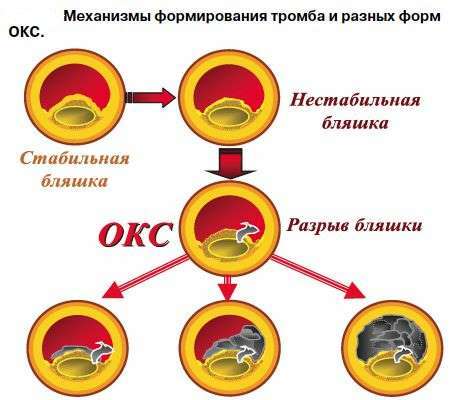 The main cause of ACS has been and remains atherosclerosis.The deposition of cholesterol in the form of plaques on the walls of the coronary arteries leads to a narrowing of the effective lumen of the vessels.Partial destruction of the plaque capsule provokes a parietal thrombus formation, which further impedes the blood flow to the heart muscle.Reducing the throughput of the coronary artery by more than 75% leads to the appearance of symptoms of myocardial ischemia.This mechanism often develops unstable angina - a more favorable form of ACS.
The main cause of ACS has been and remains atherosclerosis.The deposition of cholesterol in the form of plaques on the walls of the coronary arteries leads to a narrowing of the effective lumen of the vessels.Partial destruction of the plaque capsule provokes a parietal thrombus formation, which further impedes the blood flow to the heart muscle.Reducing the throughput of the coronary artery by more than 75% leads to the appearance of symptoms of myocardial ischemia.This mechanism often develops unstable angina - a more favorable form of ACS.
The second mechanism is complete plaque detachment and plugging of coronary arteries.In this case, the blood flow completely stops and in the cardiac muscle the phenomena of ischemia rapidly increase, and later - necrosis.Myocardial infarction develops.
The third mechanism is the emergence of a powerful spasm of the coronary arteries under the influence of catecholamines released in response to stress.Similar to him and the process that occurs due to the use of certain drugs with vasoconstrictive effect.
Symptoms of the disease
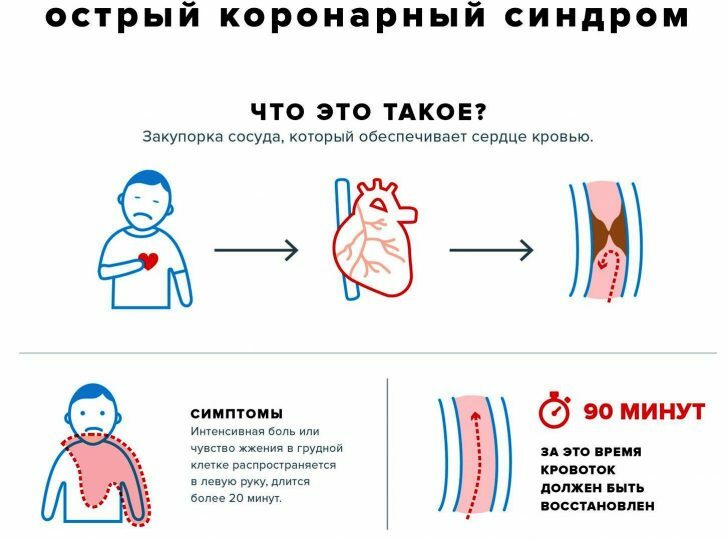
The main clinical symptom of ACS is the pain behind the sternum, a variety of both in intensity and sensation.It can be compressive, pressing, burning - these are the most typical forms of pain.Provoke an attack of ischemia stress, physical activity, emotional stress, taking certain drugs and drugs( amphetamines, cocaine).
Often the pain is not localized only behind the breastbone, but gives to different regions of the body - neck, left arm, shoulder blade, back, lower jaw.There are situations when the pain is felt only in the upper abdomen, simulating a clinical picture, for example, acute pancreatitis.In this case, the diagnosis is facilitated by instrumental and laboratory studies.Nevertheless, the abdominal form of myocardial ischemia is still the most difficult to diagnose.
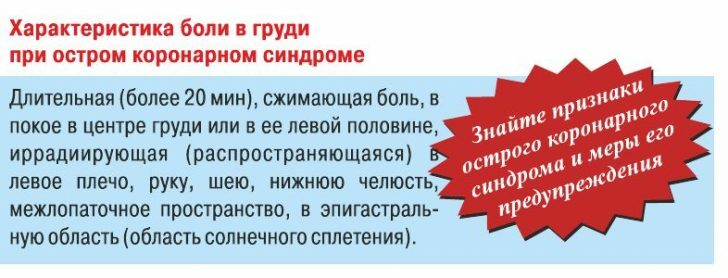
The second most common symptom is shortness of breath.Its origin is associated with a decrease in the functions of the heart for pumping blood.The appearance of this clinical sign indicates a high probability of life threatening acute heart failure with pulmonary edema.
The third symptom is the occurrence of various arrhythmias.Sometimes, heart rhythm disturbances are the only sign of impending myocardial infarction, which can occur in a painless form.In this case, too, there is a high risk of fatal complications in the form of cardiac arrest or cardiogenic shock, followed by the death of the patient.
How to identify ACS
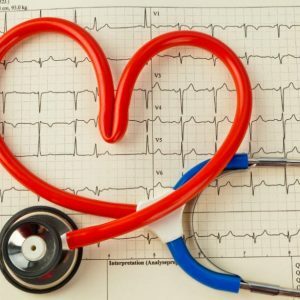 Doctors of the prehospital stage are extremely limited in the means of diagnosing acute coronary syndrome.Therefore, they do not require an accurate diagnosis.The main thing is to correctly interpret the data available at the time of the examination and deliver the patient to the nearest medical center for the final detection of the disease, observation and treatment.
Doctors of the prehospital stage are extremely limited in the means of diagnosing acute coronary syndrome.Therefore, they do not require an accurate diagnosis.The main thing is to correctly interpret the data available at the time of the examination and deliver the patient to the nearest medical center for the final detection of the disease, observation and treatment.
An ambulance doctor or therapist expresses a suspicion of ACS based on: an
- of anamnesis data( what could have caused the attack, was it first, when the pain occurred and how it developed, was the pain accompanied by shortness of breath, arrhythmia and other signsACS, what medications the patient took before the attack);
- listening data of cardiac tones, blood pressure figures;
- electrocardiographic data.
However, the main diagnostic criterion is the duration of chest pain.If the pain syndrome lasts more than 20 minutes, a preliminary diagnosis of ACS is made to the patient.Depending on the ECG characteristics, it can be supplemented with information on the presence or absence of ST segment elevation.
Emergency Care for Acute Coronary Syndrome
The chances of a patient to survive are the higher, the quicker he will be given emergency care for an acute coronary syndrome.Even if subsequently ACS develops into a myocardial infarction, timely medical intervention will limit the zone of necrosis and reduce the consequences of the disease.
WHO offers the following algorithm for urgent events:
- patient is laid on his back, unbuttoned clothing on his chest;
- the most important element of treatment is oxygen therapy, which promotes saturation of myocardial cells with oxygen under conditions of tissue hypoxia;
- the appointment of nitroglycerin under the tongue with a periodicity of 5 minutes, three doses, given contraindications;
- give aspirin in a dose of 160-325 mg once;
- anticoagulants - heparin, fondaparinux, fractiparin, etc., are injected subcutaneously;
- is required analgesia with morphine at a dose of 10 mg with a single repetition of the same amount of the drug after 5-15 minutes if necessary;
- is prescribed oral administration of one of the drugs of the beta-blockers group taking into account contraindications( reduced BP, bradyarrhythmia).In addition to these measures, actions are being taken to eliminate complications such as arrhythmias, aging or already existing pulmonary edema, cardiogenic shock, etc.
After stabilization of the patient's condition, he is urgently hospitalized in a hospital where conditions forThrombolysis( thrombus destruction), and in the absence of such a medical facility within the limits of accessibility - to any in-patient department with resuscitation or intensive care unit.
It should be remembered that the life of a patient depends on the emergency care provided in a pre-hospital emergency.World practice shows that most deaths from myocardial infarction occur before the arrival of specialized medical teams.For this reason, any patient with ischemic heart disease should be trained and recognize the first signs of acute coronary syndrome, and self-help tactics at the onset of an attack.
You will learn about the modern tactics of treating ACS under the program of health modernization on the basis of one of the clinics of the Russian Federation after watching this video review:
Bozbey Gennady, medical reviewer, ambulance doctor.

